Photography and Surrealism
The nature of photography is Surreal. By finding the precise intersection between the subject and the moment photographer could juxtapose two or more realities together transforming the Real into the Surreal
Sontag on Surrealism
In Susan Sontag’s Melancholy Objects essay from her “On Photography” book she links Documentary photography and Surrealism.
Yet it sounds like Sontag cherrypicks the Sensibility and ditches the Surrealism in general.
"That photography is the only art that is natively surreal does not mean, however that is shares the destinies of the official Surrealist movement. On the contrary. Those photographers... consciously influenced by Surrealism count almost as little today as the nineteenth century "pictorial" photographers who copied the look of Beaux- Arts painting."
She argues that photography was by itself surreal to its very core. And for Sontag the tendency towards voyeurism decisively undermines the reformist intentions of the documentary tradition.
"The mainstream of photographic activity has shown that Surrealist manipulation or theatricalization of the real is unnecessary, if not actually redundant."
Susan continues:
“Surrealism lies at the heart of the photographic enterprise: in the very creation of a duplicate world, of a reality in the second degree, narrower but more dramatic than the one perceived by natural vision”
For Sontag the image of everyday is itself inherently Surrealistic.
"The past itself, as historical change continues to accelerate, has become the most surreal of subjects - making it possible... to see a new beauty in what is vanishing."
Perhaps, Sontag sees taste for the surreal as being the basic tendency of the modern sensibility.
Thus the earliest surreal photographs come from the 1850s, when photographers first went out prowling the streets of London, Paris, and New York, looking for their unposed slice of life.
The surrealist’s seeking for 'the hidden reality' is not different from what motivates documentary photographers. Sontag states:
“Photography has always been fascinated by social heights and lower depths. Documentarists (as distinct from courtiers with cameras) prefer the latter.”
To sum up Sontag's position:
"Believing that the images they sought came from the unconscious, whose contents they assumed as loyal Freudians to be timeless as well as universal, the Surrealists misunderstood what was most brutally moving, irrational, unassimilable, mysterious--time itself. What renders a photograph surreal is its irrefutable pathos as a message from time past, and the concreteness of its intimations about social class"
It's clearly noticable that for Sontag also as for Barthes (“That-has-been”) the superimposition of the reality and the past is sureal by itself.
“In Photography [you] can never deny that the thing has been there."
– Roland Barthes
"Forget all the story of the image, just watch it. You would feel 'that has been'"
Barthes says the photographs are “the past and the real” and it's intrinsically surreal experience to have eye-contact with the dead (vanished).
"What I see is not memory, an imagination, a reconstitution, a piece of Maya, such as art lavishes upon us, but reality in a past state: at once the past and the real."
– Roland Barthes
Metaphysicalal side
I think in Sontag's Essay missed is the Metaphysical side of Surreal photography. To me it sounds like she wanted to defend the critical-reason behind the documentary photography and tried to draw the distinguishable line between photography and paintings.
"After 1800, the trend for thinking in collective terms seize the Romantics... the Romantic methaphysics of history and society, of the mind of the people and the nation, and which would always make it harder for the one to extricate from us."
Romantic aesticism was positive response to critics of Enlightment which throug the Kant led to a negative conception of the use of critical reason:
"They believed that art, and art alone, could fill the vacuum left by reason. If reason is essentially a negative power, art is basically a possitive one. While reason can only critisize, art can create. for the instrument of art is the imagination, which has the power to produce an entire world. The romantics built upon one of Kant's and Fichte's fundamental insigts: that we live in the world that we create; they add to it only that our creation should be a work of art. That this is the sum and substance of their famous 'magical idealism.'"
This Romantic power - power of life, power of nature, power of art - found its greatest transmission point in life and work of Nietzsche (German, 1844-1900).
"He who has a why to live can bear almost any how."
– Friedrich Nietzsche
It is worth to empasize the contribution of Metaphysical painting to Surrealism.
Whereas the Surrealists looked to Freud's (Austrian, 1856-1939) theories of the unconscious, for Metaphysical painter Giorgio de Chirico (Italian, 1888-1978) main philosophical guide had been Nietzsche.
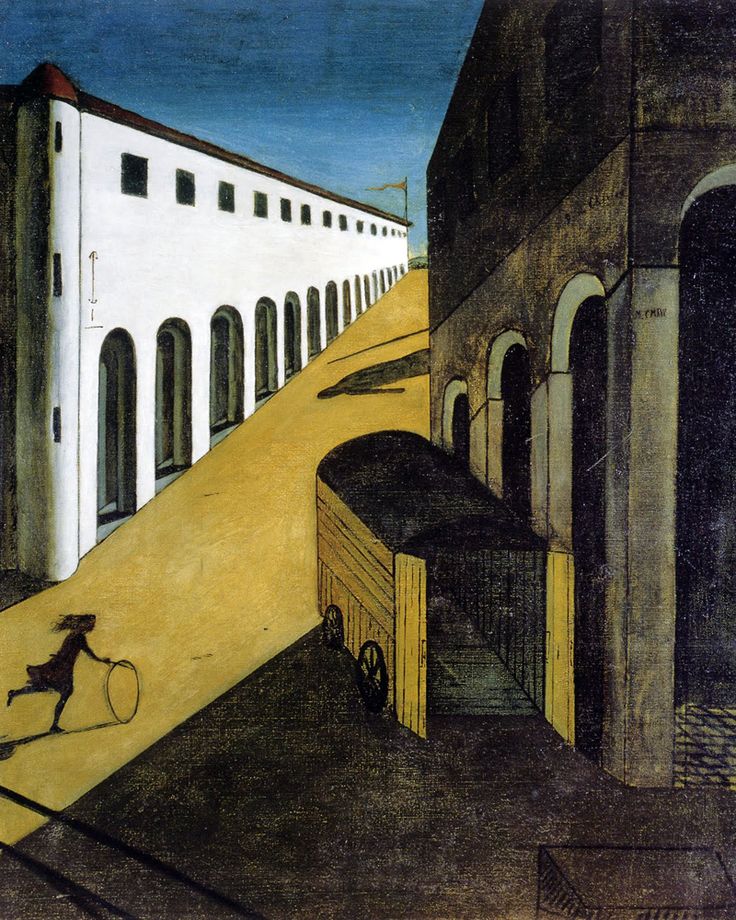
"Although the dream is a very strange phenomenon and an inexplicable mystery, far more inexplicable is the mystery and aspect our minds confer on certain objects and aspects of life"
– Giorgio de Chirico
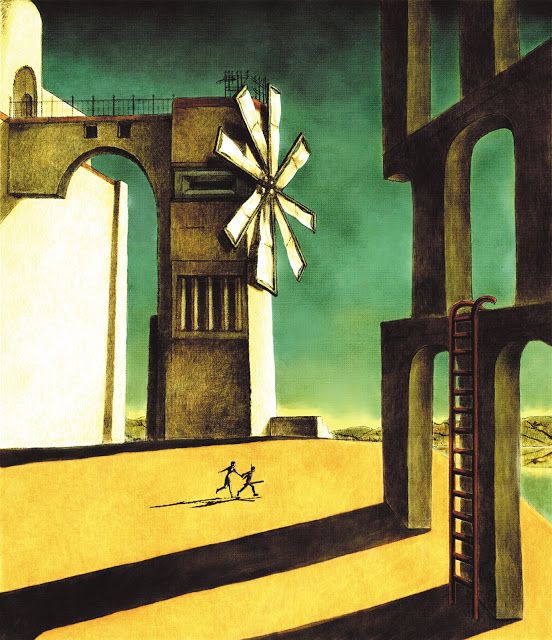
Paul Delvaux (Belgian,1987-1994) was inspired by works of Giorgio de Chirico and merged the elements of Surrealism with classical forms, exploring the humanity and subconcious.
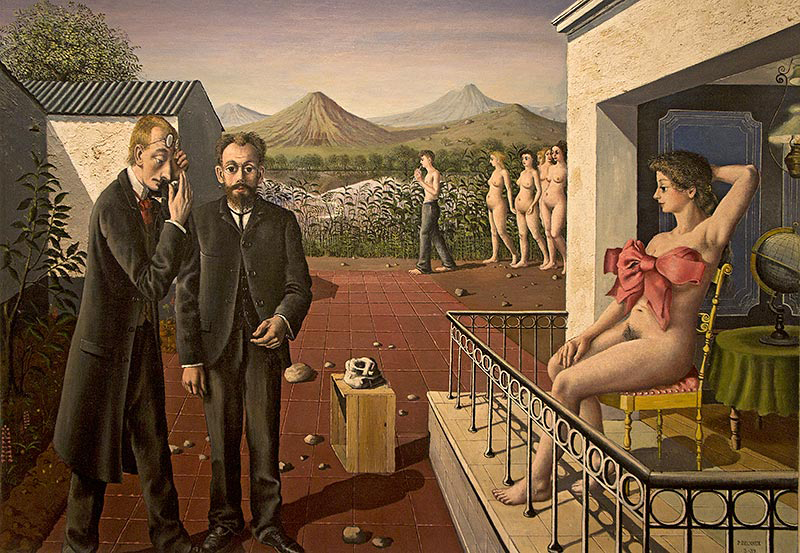
"Surrealism! What is Surrealism? In my opinion, it is above all a reawakening of the poetic idea in art, the reintroduction of the subject but in a very particular sense, that of the strange and illogical."
– Paul Delvaux
Surrealism (1924 - 1966)
Surrealists believed the rational mind repressed the power of the imagination, weighing it down with taboos. Emphasizing the power of personal imagination, they believed that revelations could be found in everyday life. The Surrealist's impulse to tap the unconscious mind remains influential up to now.
Freudian theory of psychoanalises was profoundly influential for Surrealists.
Sigmund Freud legitimized the importance of dreams and the unconscious as valid revelations of human condition, which became the one of the main theoretical basises for Surrealism.
"The interpretation of dreams is the royal road to a knowledge of the unconscious activities of the mind."
– Sigmund Freud
One of the first artists to apply Sigmund Freud's dream theories was the author bird alter ego Max Ernst (1891-1976):
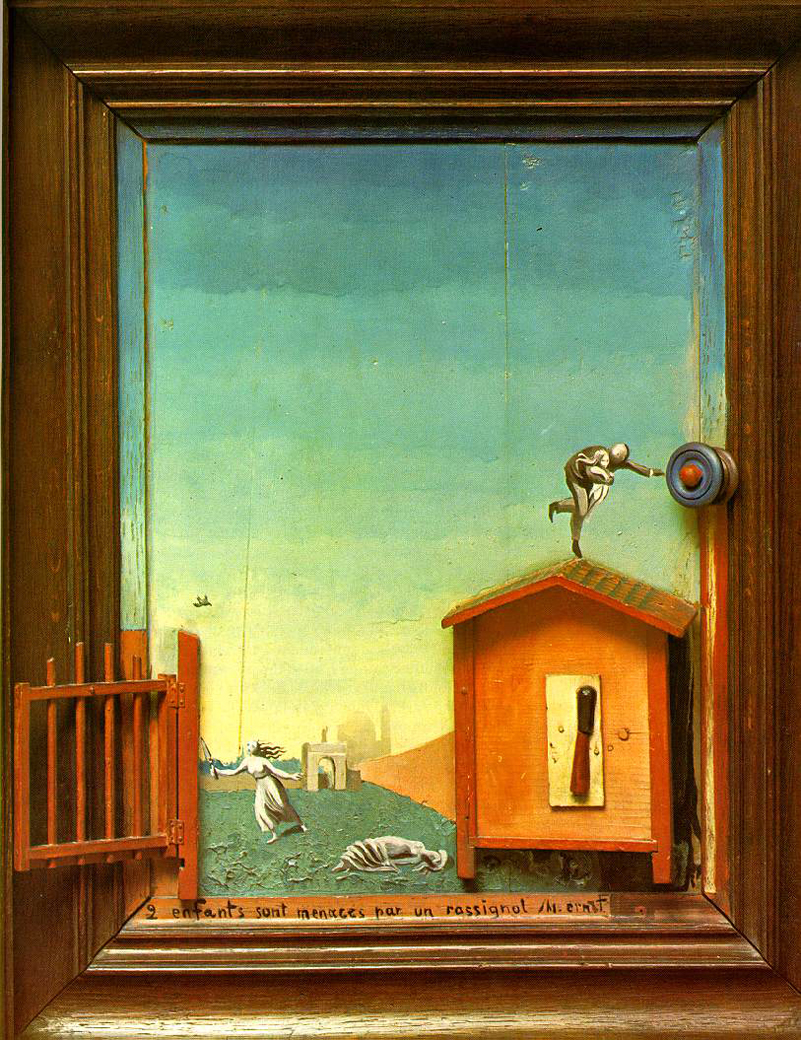
"Painting is not for me either decorative amusement, or the plastic invention of felt reality; it must be every time: invention, discovery, revelation."
– Max Ernst
André Breton with his psychic automatism proposed to forgo conscious, bypass reason and rationality and express an actual functioning of thought by accessing the unconscious mind.
"Surrealism is based on the belief .. in the omnipotence of dreams, in the undirected play of thought."
– André Breton - Manifesto of Surrealism
The most famous Surrealist is nodoubt the Spanish Artist with flamboyant and provocative personalitty Salvador Dali (1904-1989). Dali called his main technique the paranoiac-critical[1] method. He painted obsessive themes of eroticism, death, decay, mysticism, hallucinations, dreams and nightmares, optical illusions often filled with symbolism ranging from fetishes, animal imagery, nuclear physics to religious symbols.
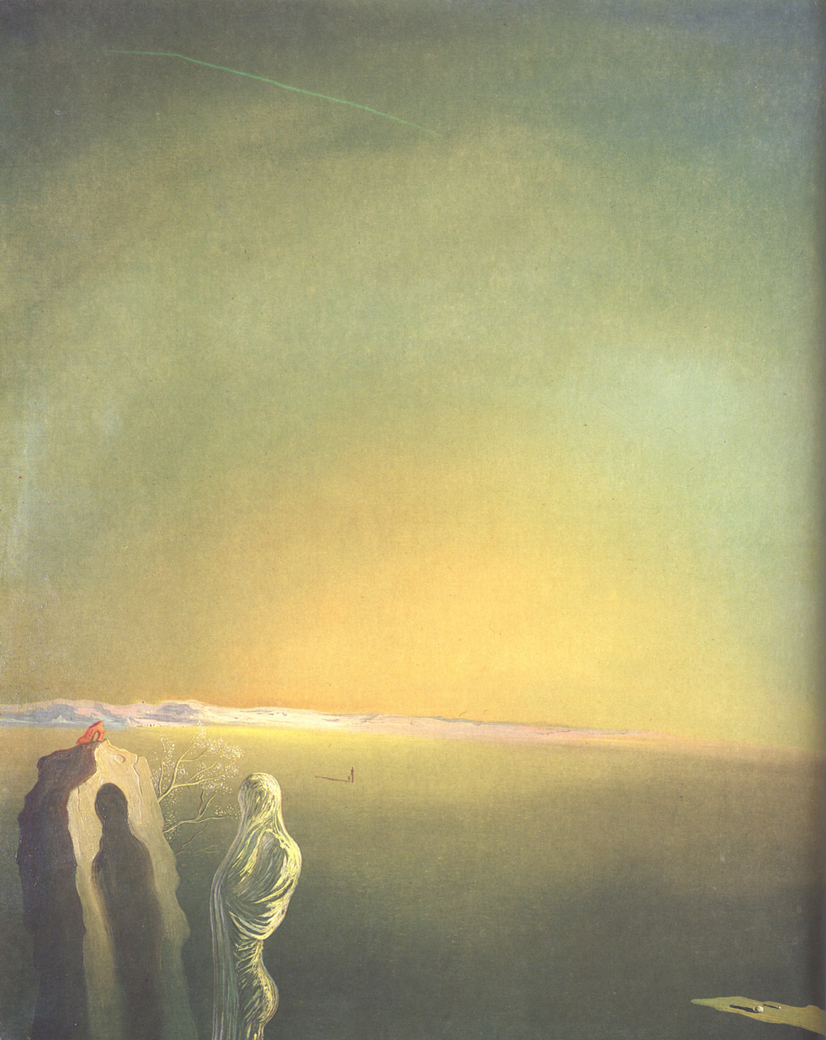
"The fact that I myself, at the moment of painting, do not understand my own pictures, does not mean that these pictures have no meaning; on the contrary, their meaning is so profound, complex, coherent, and involuntary that it escapes the most simple analysis of logical intuition."
– Salvador Dalí
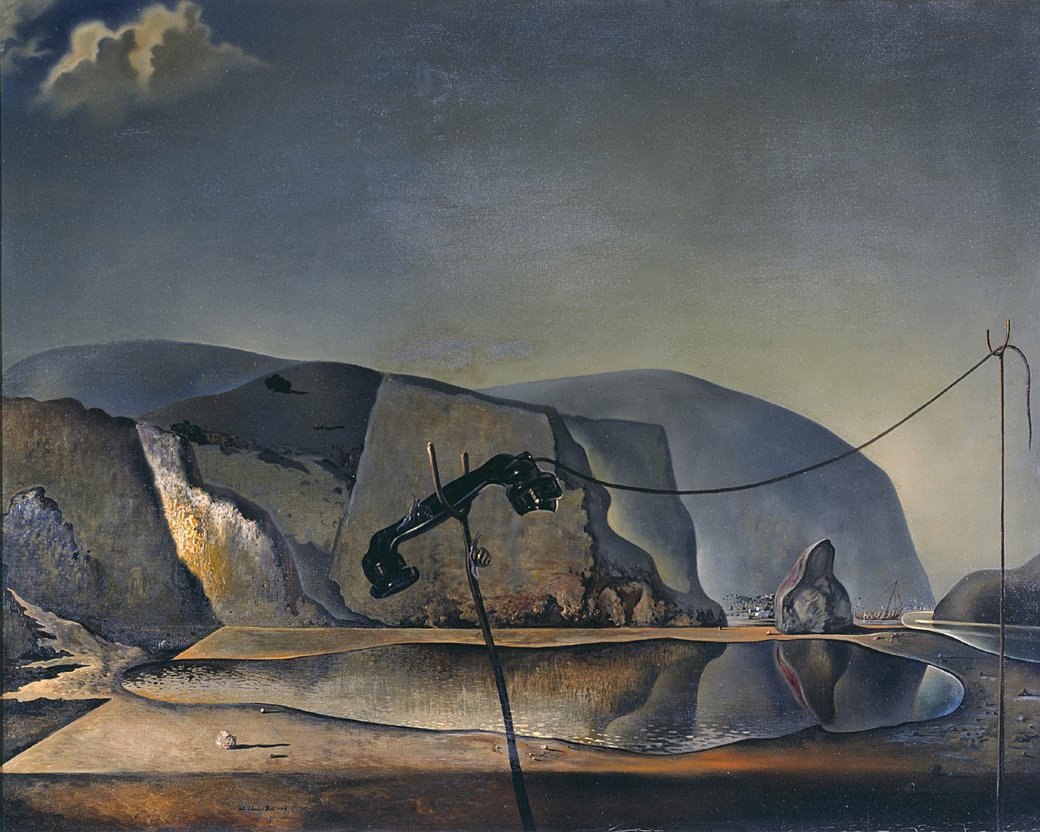
on Dali's retrospective:
"Once upon a time artists were controversial because of popular loathing; now apparently they are controversial because the public adores them."
– Cristopher Knight
he continues:
"Revisionist's (Dali's) curators get to play cliched role of rebellious artist, challenging conterfeit taboos, while mirroring Dali's vacuous careerism."
Belgian artist Rene Magritte preferred the quiet anonymity and settled on a deadpan and repetitions. The paradox of his beautifull and simplistic pictures that although those are made with incredible clarity, at the same time they provoke unsettling thoughts due to mystery of misunderstandings.
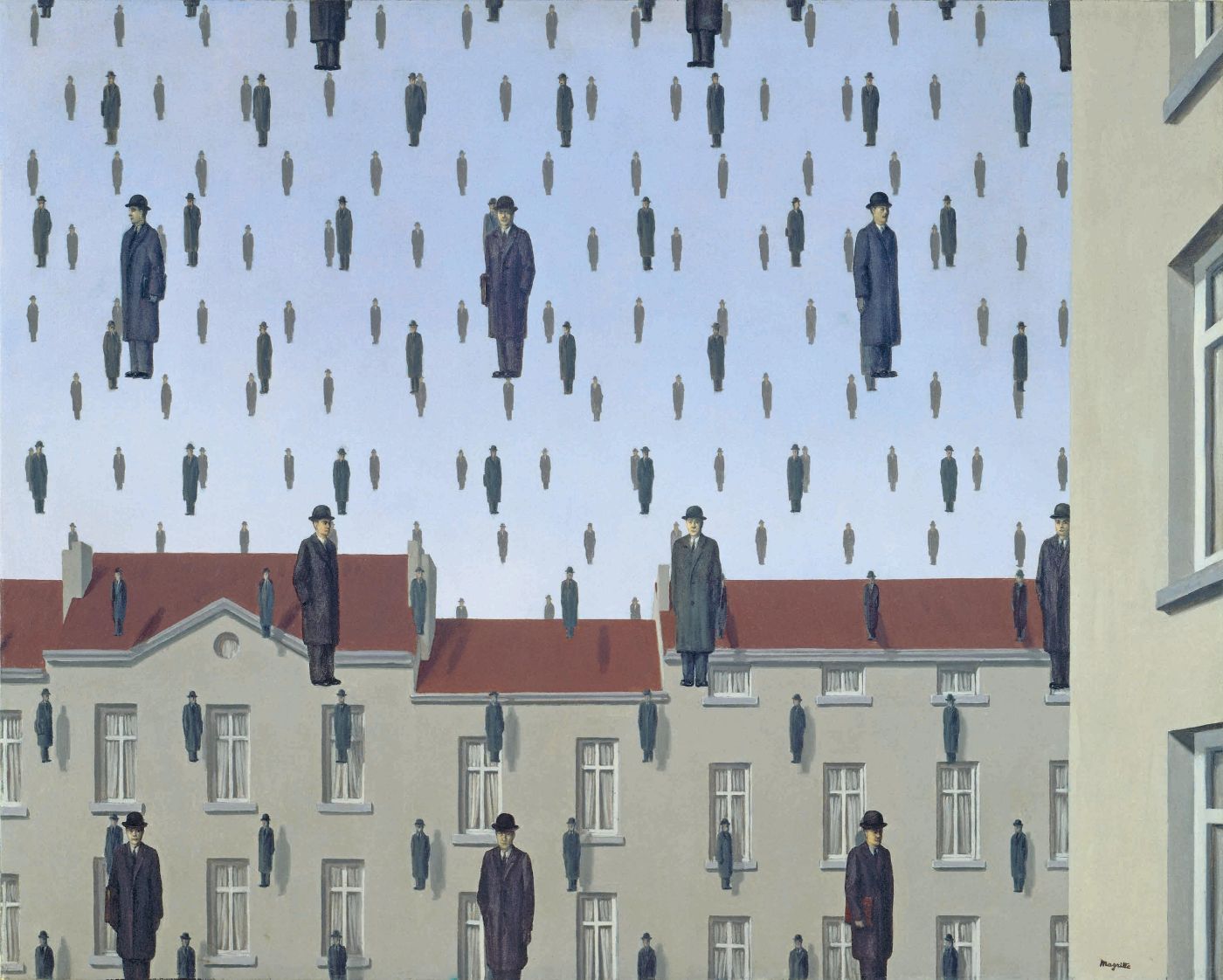
The perplexing and often mysterious and supernatural imagery of Surrealism is meant to kick the viewer out of their comforting assumptions and relies on reccuring motifs in author's unconscious mind.
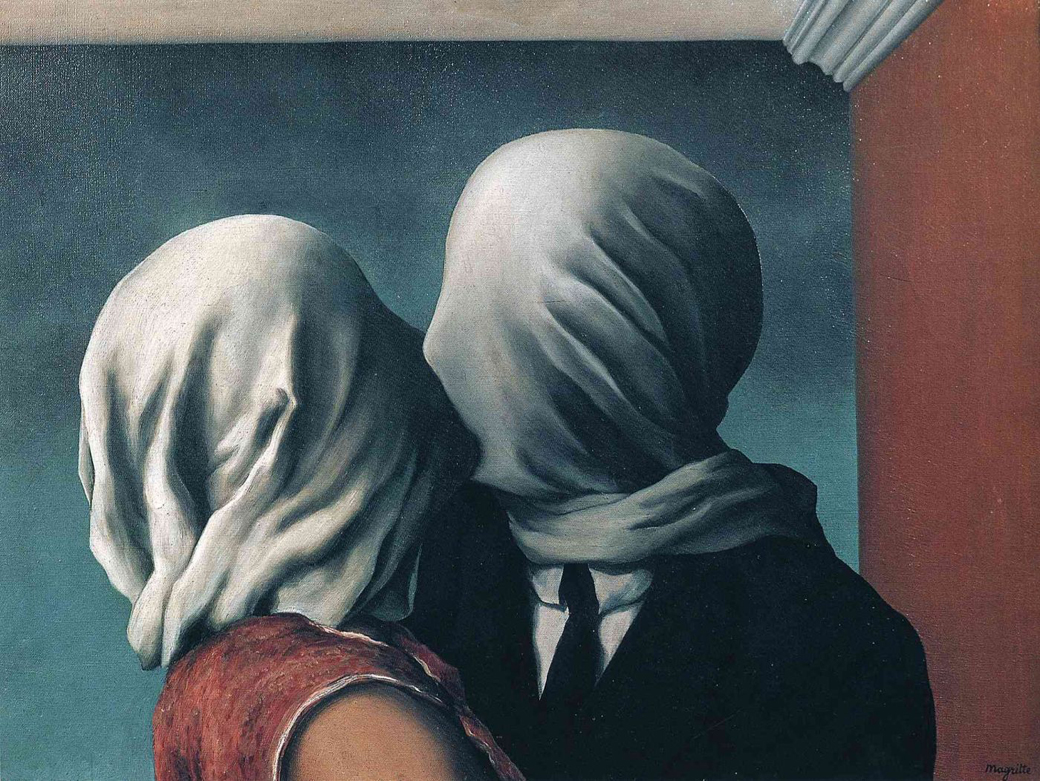
The original Parisian Surrealists used art as a reprieve from violent political situations and to address the unease they felt about the world's uncertainties
Maurits Cornelis Escher (Dutch, 1898-1972) graphic artist did not belong to surrealists movement. He produced mathematicaly precise, yet very surreal worlds at that period.
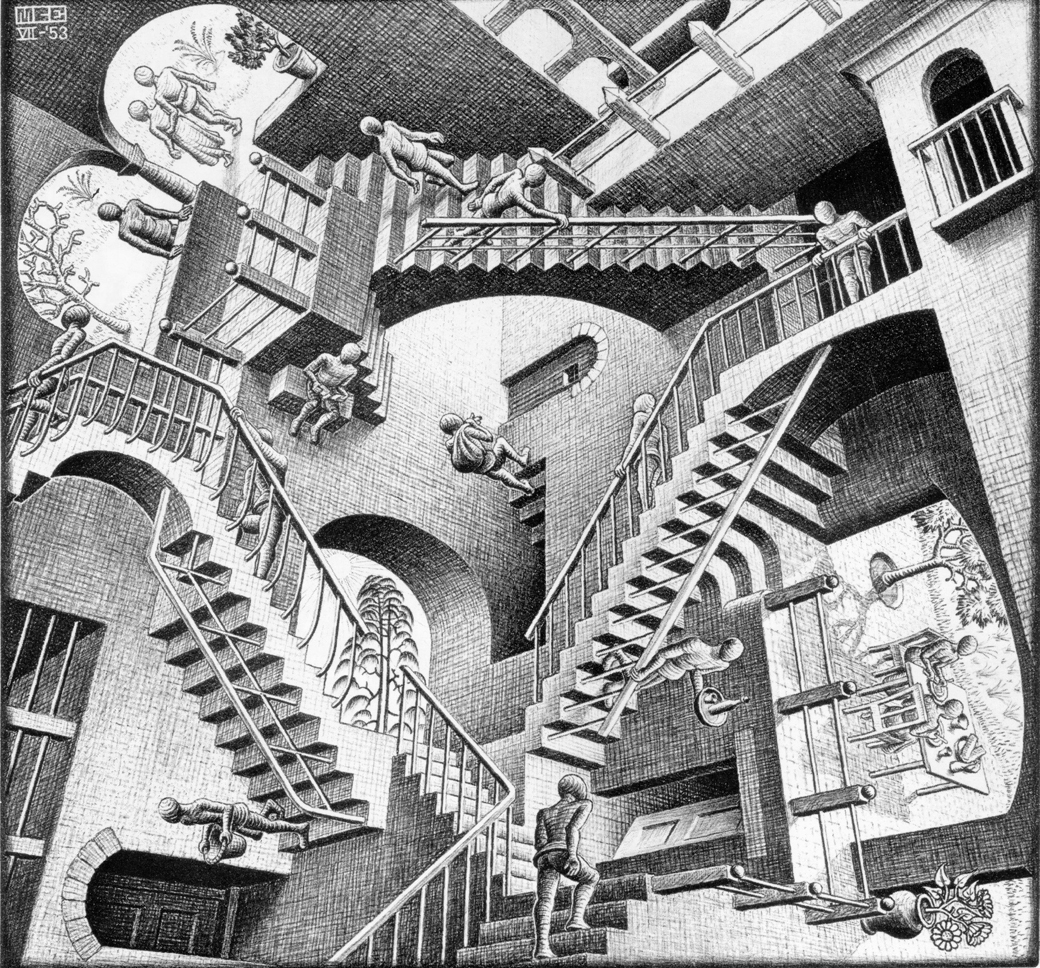
Escher methodically pushed representative techniques to their limits. He constantly investigated plasticity of perspective and rythmic positioning in a space.
“If you want to express something impossible, you must keep to certain rules. The element of mystery to which you want to draw attention should be surrounded and veiled by a quite obvious, readily recognisable commonness.”
– M.C. Escher

Surreal Photography
Prosaic photographs disconnected from their original purposes and seen through the lens of Surrealist sensibility were appreciated in Surrealists movement.
Man Ray (American 1890–1976) embraced the possibilities for irrational combinations through partial surrender of compositional decisions to an accident. It brought him to the heart of Dada[2] movement, and then to Surrealists movement in Paris led by Andre Breton.
“I have finally freed myself from the sticky medium of paint, and am working directly with light itself.”
– Man Ray
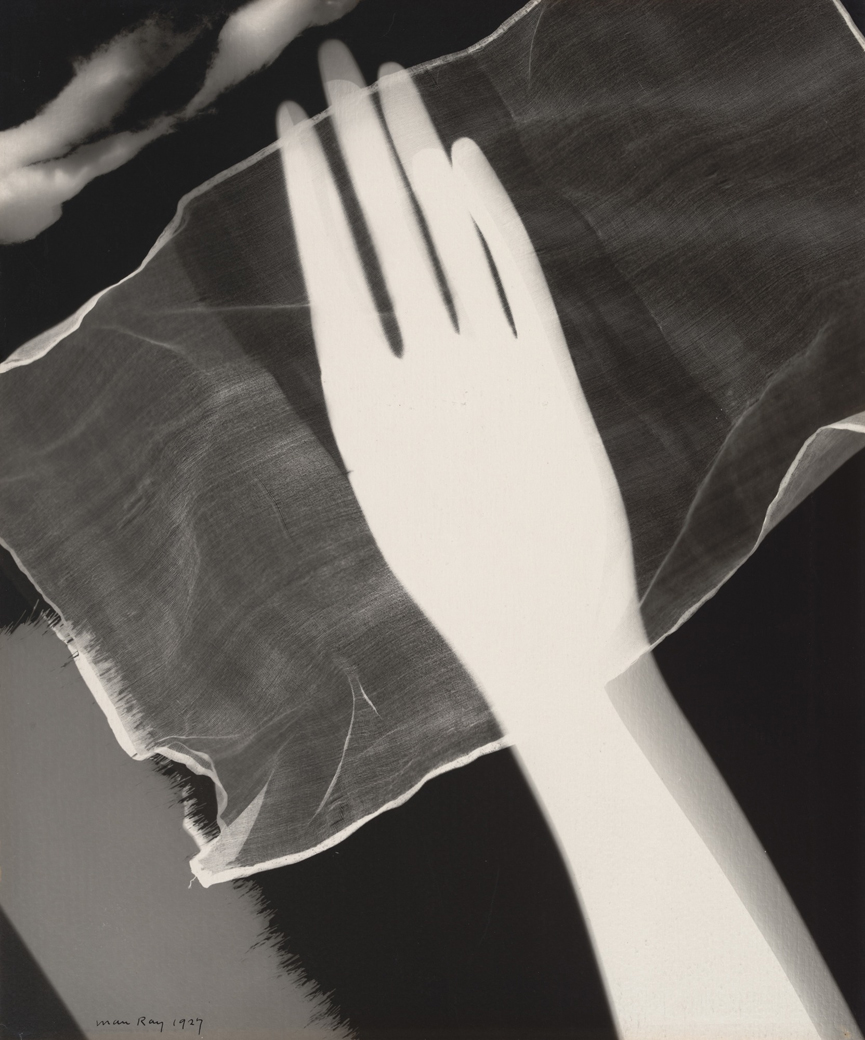
Eugène Atget’s (French, 1857–1927) documentary vision on vanishing Paris proved highly influential on the Surrealists in the 1920s, who found his pictures of street life, deserted streets, stairways and shop windows beguiling and richly suggestive
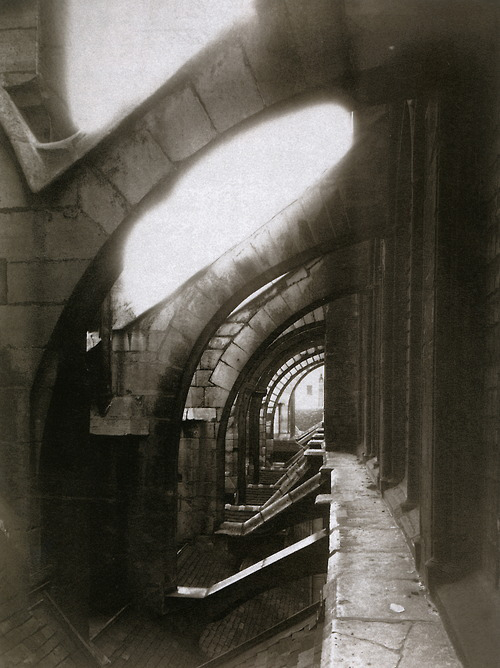
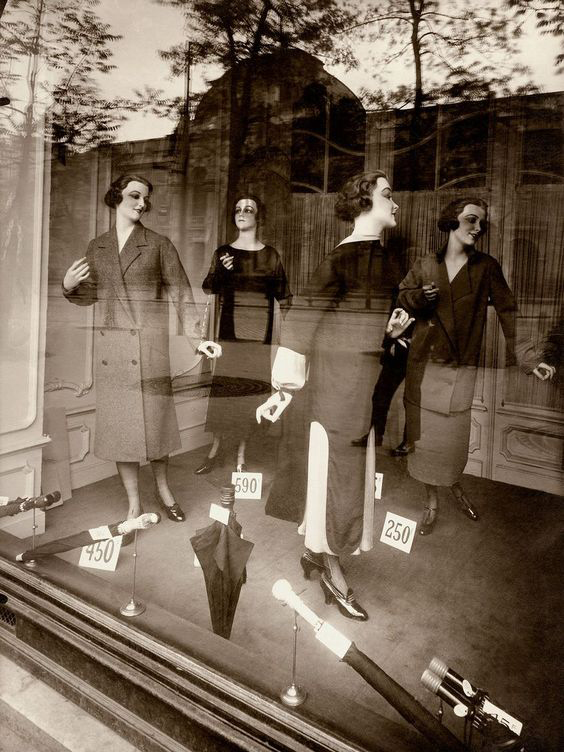
Andre Kertesz (French 1894–1985) has published the Series of nudes in 1933 presented under the title "Distotions". Through the mirrors he photographed - a body extracted from the surroundings in which we are used to see them and adopt forms that distort their natural proportions in oddy and often humoristic way.
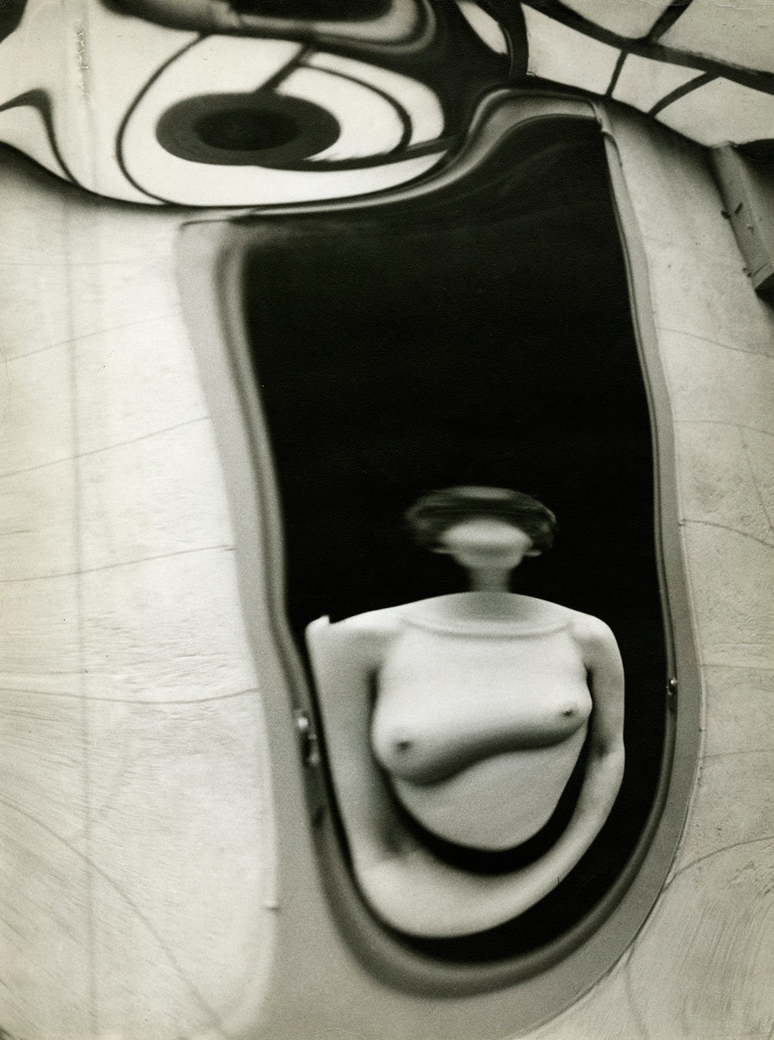
Andre never was a member of the Surrealist movement, but it is natural to see
his “Distortions” in line with it as the one of the most organic and opened for questions project of that period.
Kertész’s nudes can be read in a range of different discourses. One of them is to read them as comments on the nude photograph’s traditional functions, which to a considerable extent highlighted the female body as the incarnation of harmonic and beautifulform. The pictures may also be seen as an ironic comment on how the female body depicted as a sexual object, had been a primary motif for photographers through the history of photography.
– Peder Lund Gallery
Unlike Man Ray, Andre never manipulated images, yet many of his works are Surreal by heart.
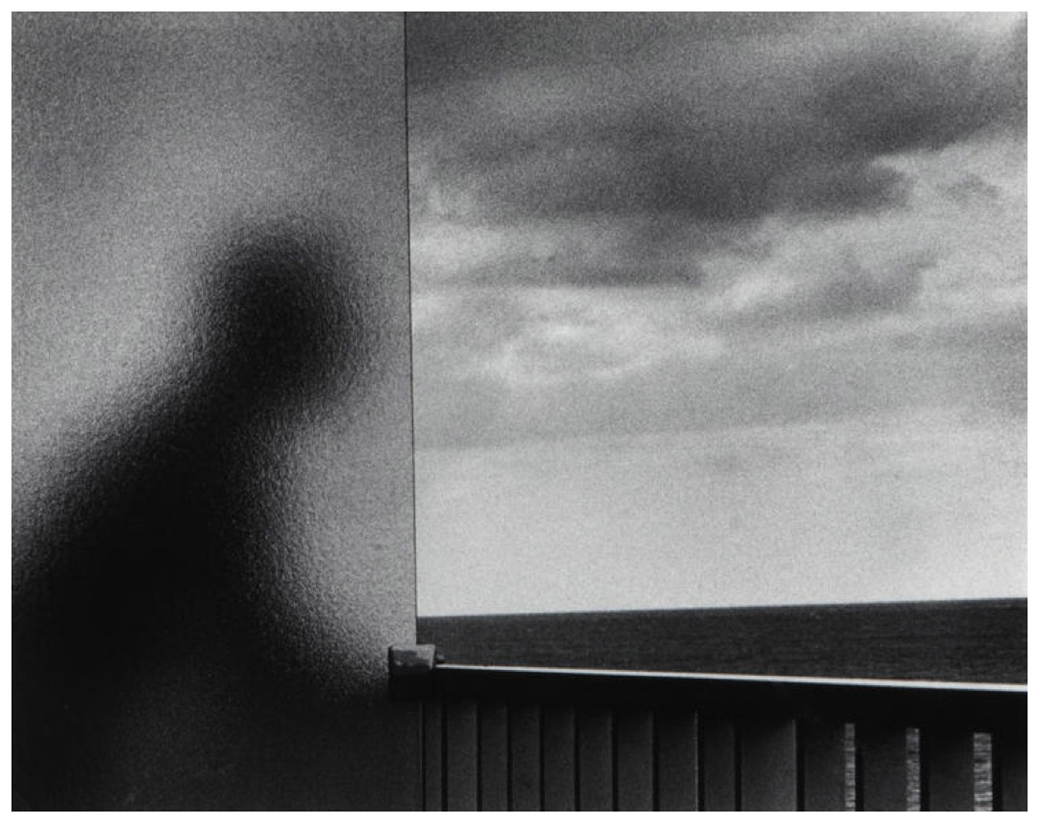
"I am not a surrealist. I am only a realist. All this group - surrealists - use my name. No, no, I am realist."
– Andre Kertesz
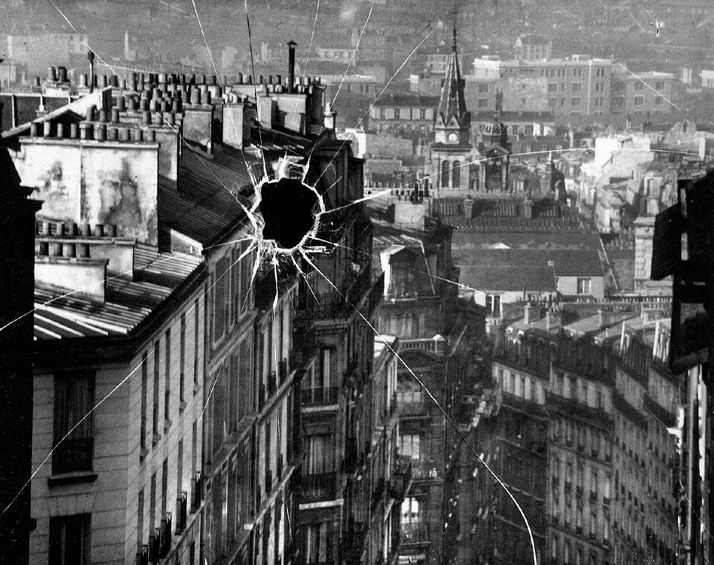
"I do not document anything, I give an interpretation."
– Andre Kertesz
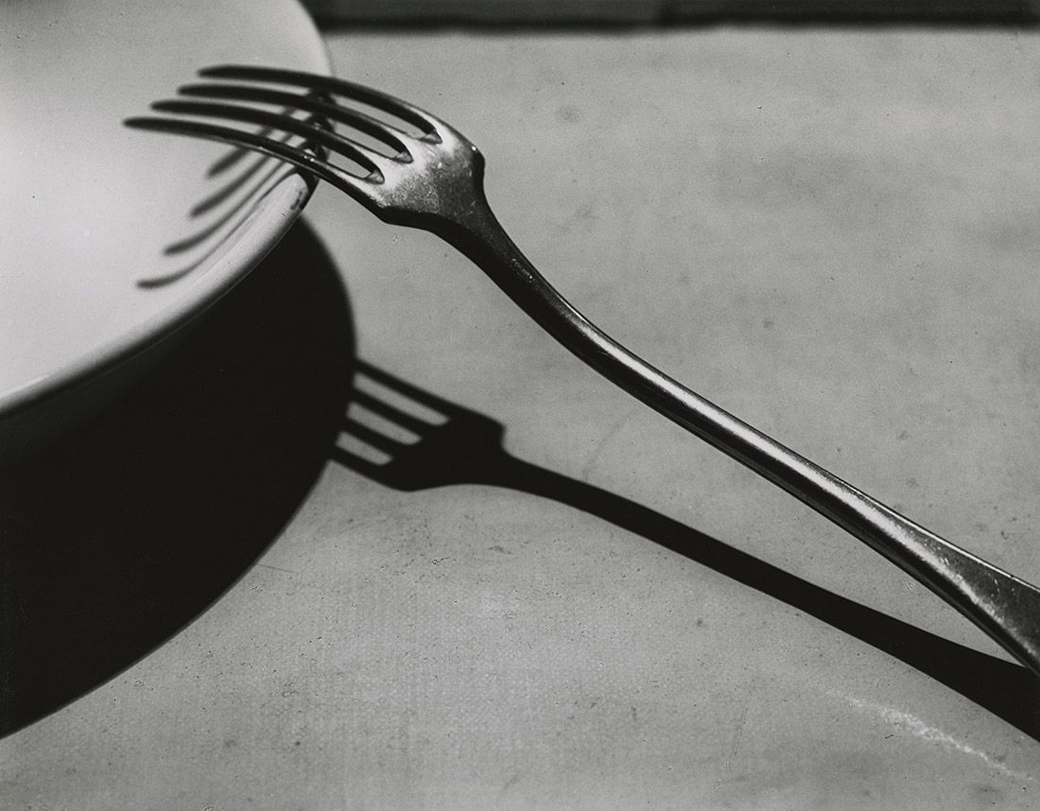
Bill Brandt (German-British, 1904-1983 ) Surrealist who found beauty in the commonplace, blurring of the lines between the real and imagined.
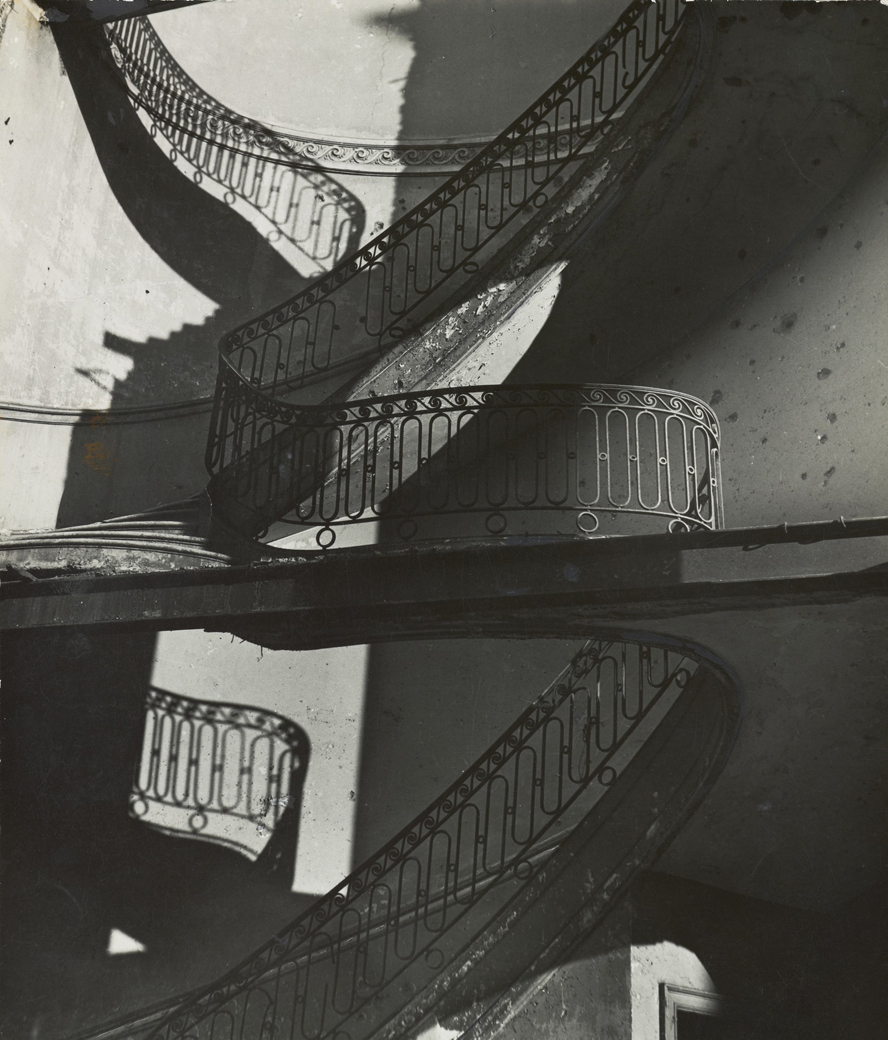
" The good photographer will produce a competent picture every time whatever his subject. But only when his subject makes and immediate and direct appeal to his own interests will he produce a work of distinction."
– Bill Brandt
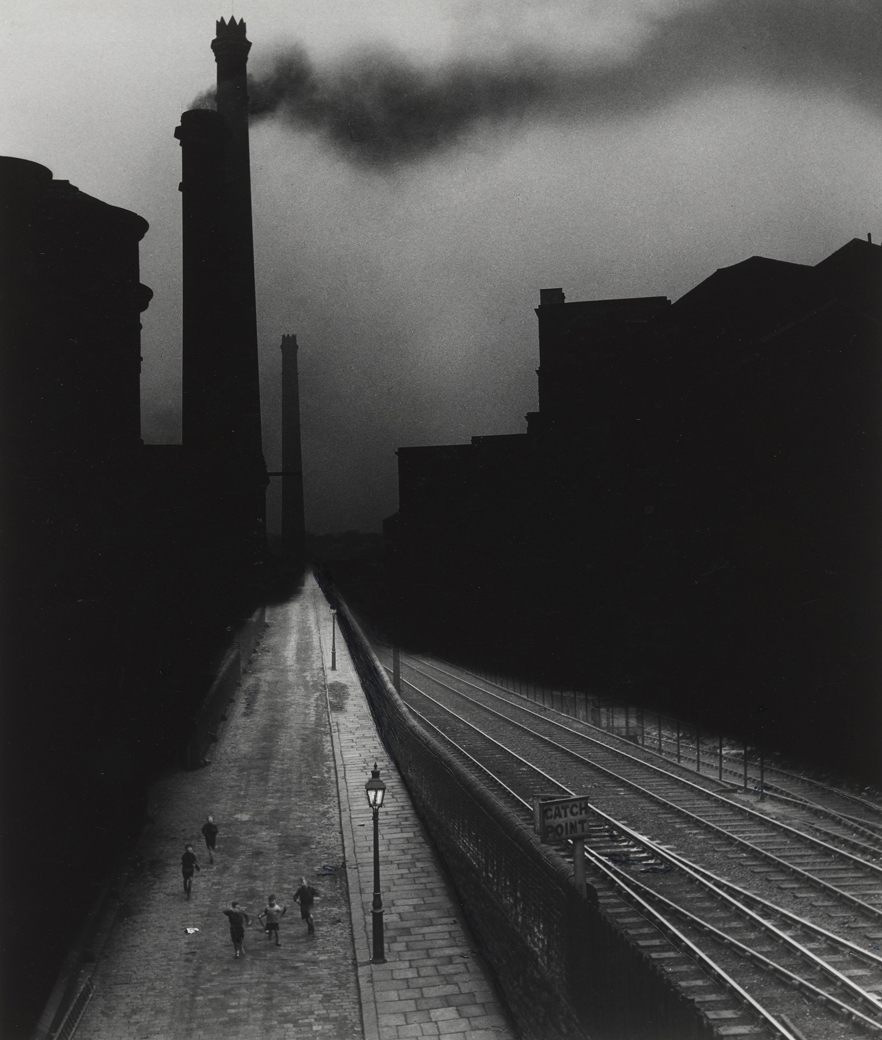
Discourse
Whereas Enlightenment (1685-1815) was relying mostly on rational thoughs and science, and the Romanticism (1800-1850) had redically opposed vision: "The Art for Art sake".
A philosopher Hegel (German, 1770-1831) thought that "The Art has to have purpose" and his lectures on Aesthetics set the end of Romantic period.
"Art is the sensuous presentation of ideas."
– Hegel
The pressure of radical rationalization tiggered discontent among the social groups, which reflected in Freud's psychoanalysis and importance of subconcious.
Andre Breton's approach was to estrange object in order to allow seeing it with all its strangeness like for the fist time. The goal was defimiliarize or displace the object by removing it from its expected context.
Once the object was removed from its normal circumstances, it could be seen without the mask of its cultural context.
What I like about Surrealism that it clearly emphasizes the idea of recontextualization and constant need in disenchantment and re-enchantment.
If to look in more Global context, exact same need for changes is a driving vehicle in a creation and turning of Art periods.
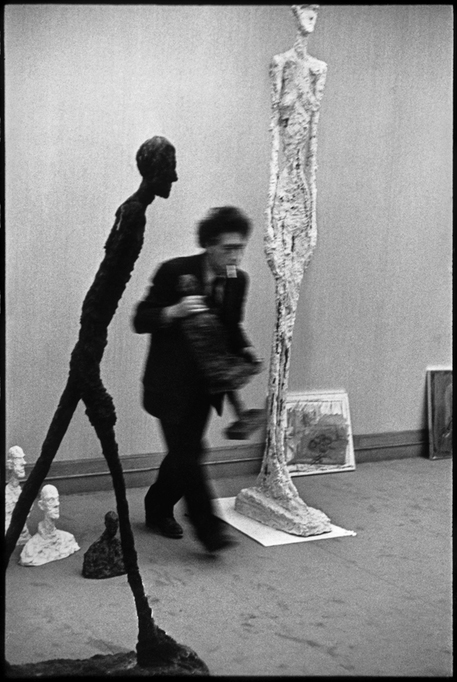
Moving further a philosopher Peter Sloterdijk (German, 1947-...) examines art considering the wide range of aspects, in its relation to ethics, metaphysics, society, politics, anthropology and the subject.
"Wherever one encounters members of the human race, they always show the traits of a being that is condemned to surrealistic effort. Whoever goes in search of humans will find acrobats."
– Peter Sloterdijk
Whereas Nietzsche called to the capacity to ruminate, Sloterdijk prescribed the capacity for breathing:
"The modern world process led to a point beyond which the most external path, politics, and the most inner path meditation speak the same language; both revolve orund the principle that only relaxation of tensions can help us along...Meditation and disarmament discover a strategic common interest."
– Peter Sloterdijk
Today, art is a “discourse”, as we know, a conceptual field in which
the different types of images, objects, processes, activities, theories, ideas and
institutions play a role. The dynamism of this field is characterized by instabilities,contradictions and conflicts that trigger disquiet among the one or other viewer.
"The visual field is constructed socially and the social field visually"
– W.J.T. Mitchell
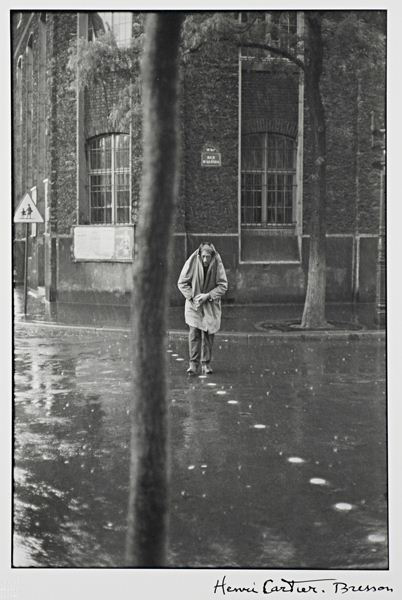
We could say that Art depends on the social context and it affects it at the same time. Whereas mass-culture deceives masses, the Art has to preserve its critical function enlightening us on social illusions.
The Art reflects Society, yet it has to show what society could be and should be.
It has to insist to be perceptive not deceptive and expand out of the mass-culture to allow us to see out of set borders.
I believe that Art is Non-stop Discource towards recontextualization of the ordinary objects, which estranged from their original context become the sources of surprise and ignite the social transformation.
The fun part about it, that the piece of Art created in one context might be perceived completely differently in another one. That's why in one period some pictures resonate more than others. Those became the dimmed mirrors opened for infinite interpretations which reflect our personal ambiguities.
“That is the way with every true artwork, for each, as if it contained an infinity of intentions, were open to infinite interpretation, although one can never say whether this infinity was created by the artist or is the product of the artwork.”
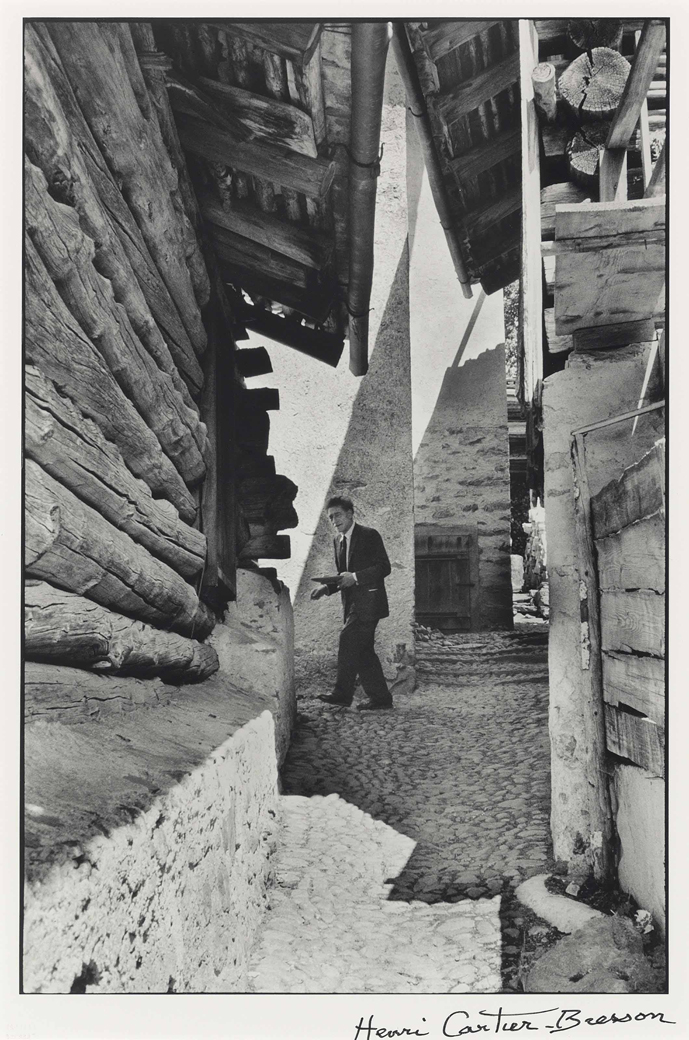
"The object of art is not to reproduce reality, but to create a reality of the same intensity"
– Alberto Giacometti
Modernists braked with the past and eager to search for new forms of expression.
PostModernism brought the broad skepticism, subjectivism and suspicion of reason.
Although Surrealism period has Ended (in 1966), the importance of Surreal would always remain Within.
"I believe that Surreal and Methaphisical are the particles of the photographic substance itself. Those help to convey the certain message or just to open the discource. A Photograph could contain multiple layers at the same time. Therefore there is no reason to reduce its completeness by splitting the each layer across the separate movements, where the other sides might be ingrorred and remained unseen. – Andrii Mur"
Books


Sources
- "On Photography" - book by Susan Sontag
- "Ways of Seeing" book by John Berger"
- "Consuming Surrealism in American Culture: Dissident Modernism (Studies in Surrealism)" - book by Sandra Zalman
- "Sloterdijk (Key Contemporary Thinkers)" - book by Jean-Pierre Couture
- "In Medias Res: Peter Sloterdijk's Spherological Poetics of Being" - book by Willem Schinkel
- Encyclopedia Britannica
- Bill Brandt Archive
- TIME100 - Dalí Atomicus by Philippe Halsman
paranoiac-critical method - "spontaneous spontaneous method of irrational knowledge based on the critical and systematic objectivity of the associations and interpretations of delirious phenomena." ↩︎
Dada - An artistic and literary movement. Conceptual art movement which arose as a reaction to World War I and nationalism. ↩︎